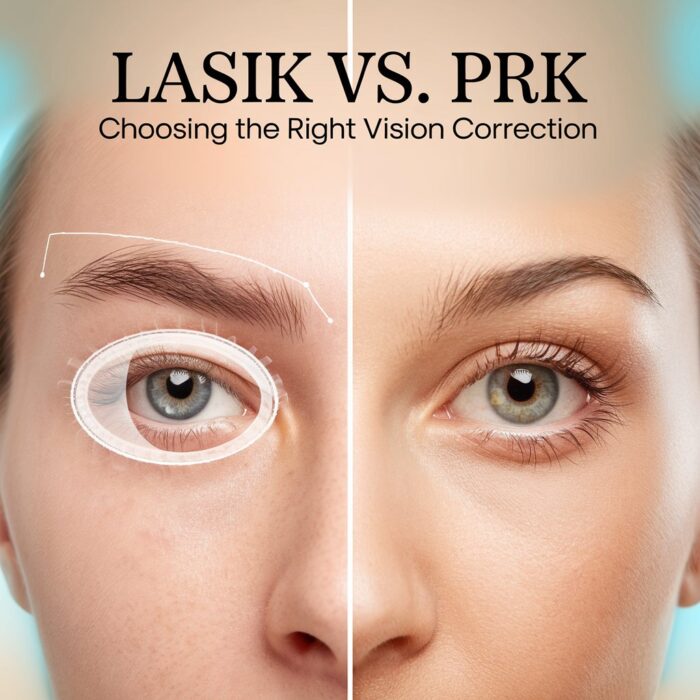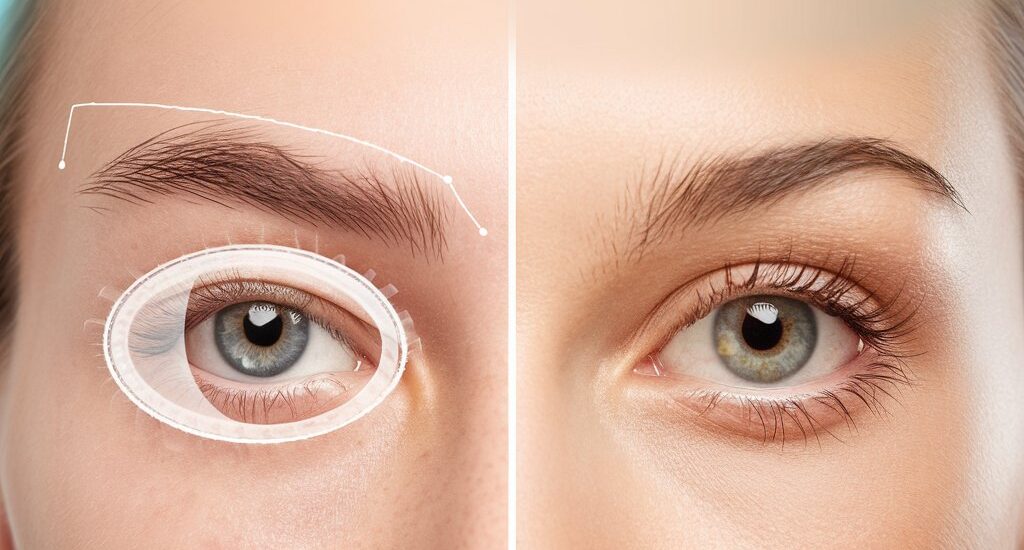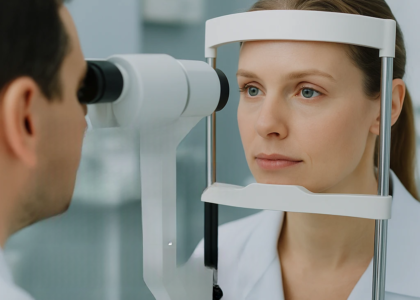When it comes to laser vision correction, LASIK and PRK are two popular options that can help you achieve clearer vision. At RK Eye Hospital, we understand that choosing the right procedure is crucial for your eye health and vision goals. In this post, we’ll explore the differences, benefits, and considerations of LASIK and PRK to help you make an informed decision.
What is LASIK?
LASIK (Laser-Assisted In Situ Keratomileusis) is a surgical procedure that reshapes the cornea to improve vision. Here’s how it works:
- Preparation: The surgeon numbs the eye with anesthetic drops.
- Creating the Flap: A thin flap is created on the cornea using a laser or a microkeratome.
- Reshaping the Cornea: The surgeon uses a laser to remove precise amounts of corneal tissue beneath the flap, correcting refractive errors such as nearsightedness, farsightedness, and astigmatism.
- Repositioning the Flap: The flap is then laid back in place, and it naturally adheres without stitches.
Benefits of LASIK:
- Quick recovery time, often within a few hours.
- Minimal discomfort during and after the procedure.
- Immediate improvement in vision for most patients.
What is PRK?
PRK (Photorefractive Keratectomy) is an alternative to LASIK that also reshapes the cornea, but the technique differs in several key ways:
- Preparation: Similar to LASIK, the eye is numbed with anesthetic drops.
- Removing the Epithelium: In PRK, the outer layer of the cornea (the epithelium) is gently removed to expose the underlying tissue.
- Reshaping the Cornea: A laser is used to reshape the cornea, correcting refractive errors.
- Healing: The epithelium regenerates over time, naturally covering the cornea again.
Benefits of PRK:
- Suitable for patients with thinner corneas who may not qualify for LASIK.
- No corneal flap is created, reducing the risk of flap-related complications.
- Can be a better option for individuals with certain corneal irregularities.

Key Comparisons
| Feature | LASIK | PRK |
| Flap Creation | Yes, a flap is created. | No, the epithelium is removed. |
| Recovery Time | Quick recovery; vision improves within hours. | Longer recovery; vision improves over several days to weeks. |
| Pain Level | Minimal discomfort. | Some discomfort during the healing process. |
| Ideal Candidates | Good for most patients with thick corneas. | Suitable for those with thin corneas or certain corneal issues. |
| Long-Term Results | Similar long-term vision outcomes. | Similar long-term vision outcomes. |
Which Procedure is Right for You?
The choice between LASIK and PRK depends on several factors, including your eye health, lifestyle, and personal preferences. During your consultation at RK Eye Hospital, our experienced ophthalmologists will assess your eyes and discuss your options to determine the best procedure for your needs.
Conclusion
Both LASIK and PRK are effective laser vision correction procedures that can improve your quality of life by reducing or eliminating the need for glasses or contact lenses. At RK Eye Hospital, we are committed to providing personalized care and advanced technology to ensure the best possible outcomes for our patients.
If you’re considering laser vision correction, schedule a consultation with us today. Our team will guide you through the process and help you achieve clearer vision!







